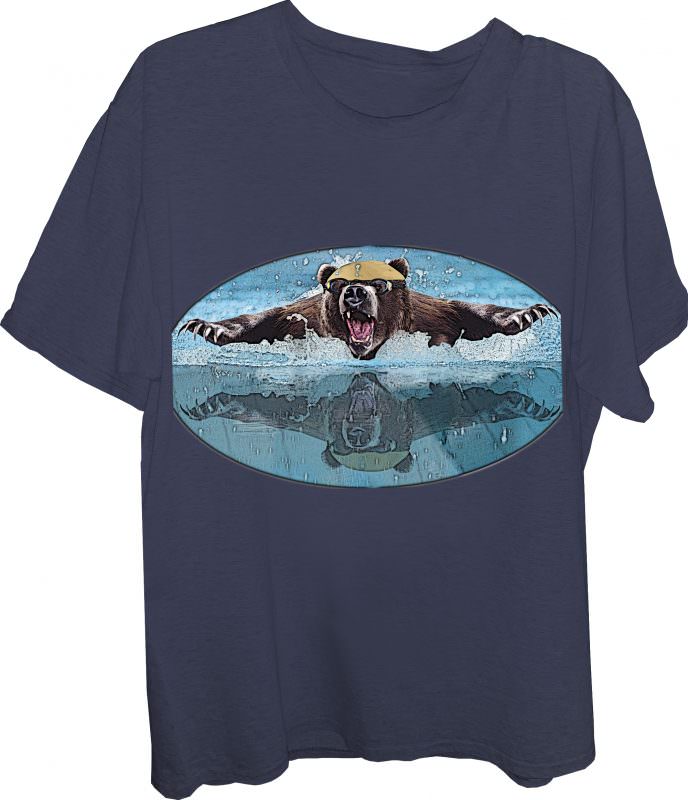A brown bear swimming. A black bear swimming. A grizzly bear swimming. A polar bear swimming. A golden bear swimming. Absolutely. All of these bears know how to swim and like to swim.
When it comes to long-distance swimming, polar bears are the Katie Ledecky and Zane Grothe equivalents among bears. Polar bears often swim 25-30 miles between icebergs. Polar bears are capable of swimming over 200 miles, the longest recorded distance being 220 miles.
Kodiak bears, a subspecies of brown bears, are also good long-distance swimmers. Kodiak bears have been documented swimming up to 30 miles.
Kodiak bears, and polar bears are the largest of the bear species (See table below). Large amounts of fat provide polar bears and kodiak bears with increased buoyancy in the water. Large amounts of muscle provides polar bears and kodiak bears extensive energy storage. This combination is ideal for long distance swimming.
Black bears and grizzly bears are the bear counterparts of Caleb Dressel and Michael Phelps as they excel at short and middle distance swimming. They use short bursts of fast swimming for catching fish.
How do bears compare to humans when it comes to swimming? Bears can swim at speeds up to 6 mph. Swimming world record holder Caleb Dressel swam the 50 yard freestyle at 1.72mph and the 100 yard freestyle at 1.95 mph. So as it turns out, bears can swim faster and further than most humans. However, despite their apparent aquatic superiority bears have yet to master how to swim butterfly, backstroke, or breaststroke. Plus it’s unlikely we will be seeing any bears swimming the individual medley or on a relay team any time soon.
| Polar Bear | Brown Bear | |
| Average Weight of Mature Male | 900-1,500 pounds | 500-900 pounds |
| Heaviest Recorded | 2,210 pounds | 2,500+ pounds |
| Average Length of Mature Male | 8-8.4 feet | >7-10 feet |
From Gary Brown’s Great Bear Almanac (New York, 1993)

